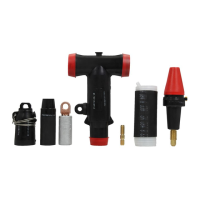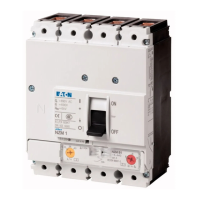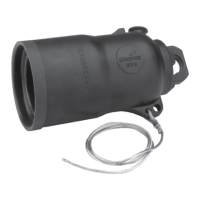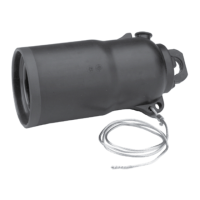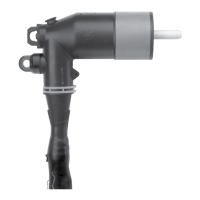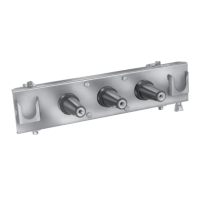Refer to Table 3-1 for the steps to program the control
panel for operation. Refer to the Appendix for the Wiring
Diagram.
Allowable system voltages and calculation of
overall PT ratio
If the system voltage is other than those listed on the
nameplate, it can be determined if there is sufficient ratio
correction available from the control winding (internal PT)
taps and the Ratio Correction Transformer (RCT) taps to
allow the CL-6 Series control and motor to function properly.
The general guideline is that the overall PT ratio is sufficient
if the voltage delivered to the control for the nominal voltage
conditions is in the range of 115 –125 V.
To determine the voltage delivered to the control, use the
following procedure:
1. Calculate the desired PT ratios.
Desired PT Ratio = Desired system voltage ÷ 120 V
2. Choose the internal PT ratio on the nameplate closest to
the desired PT Ratio.
3. Calculate the actual voltage at the output of the inter-
nal PT.
Internal PT Output Voltage = Desired system voltage ÷
Selected Internal PT Ratio
4. Choose the RCT tap (133, 127, 120, 115, 110, 104)
closest to the internal PT output voltage.
5. Given the RCT input tap, use Table 3-2 to determine the
RCT ratio.
6. Calculate the control input voltage.
Control Input Voltage = Internal PT Output Voltage ÷ (RCT
Ratio)
7. Calculate the overall PT Ratio.
Overall PT Ratio = Internal PT Ratio
x
(RCT Ratio)
EXAMPLE: If a 60 Hz, 7620 V regulator is to be used on a
system with a nominal voltage of 2500 V, the following is
determined:
1. 2500 V ÷ 120 V = 20.8
2. Choose 20:1 for the internal PT ratio.
3. Internal PT output voltage = 2500 V ÷ 20 = 125 V
4. Best RCT input tap is 127.
5. RCT ratio is 1.058.
6. Control input V = 125 ÷ 1.058 = 118 V
This is within allowable range.
7. Overall PT ratio = 20
x
1.058 = 21.2:1
Table 3-2. RCT Ratios
RCT Input Tap RCT Ratio
133 1.108
127 1.058
120 1.000
115 .0958
110 .0917
104 .0867
21
CL-6 SERIES CONTROL INSTALLATION, OPERATION, AND MAINTENANCE INSTRUCTIONS MN225016EN January 2016

